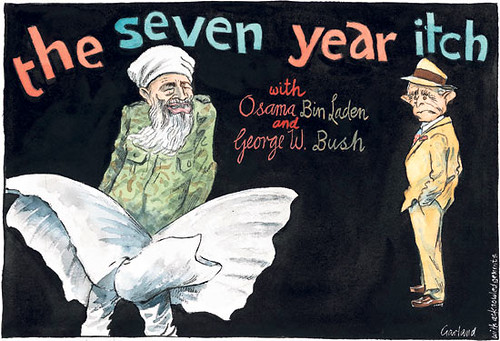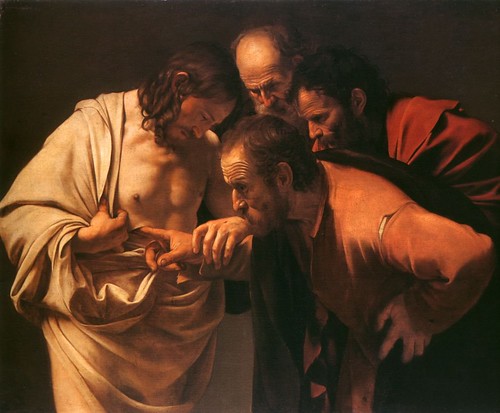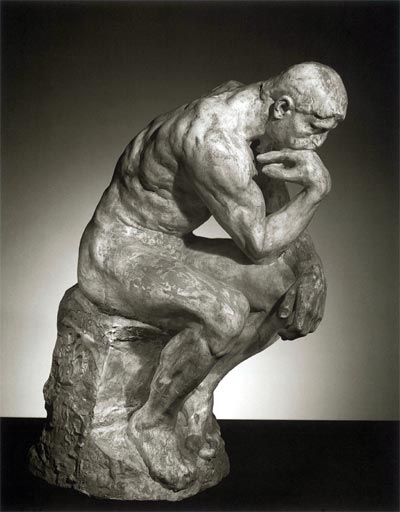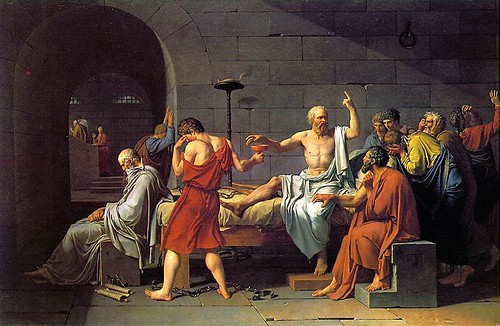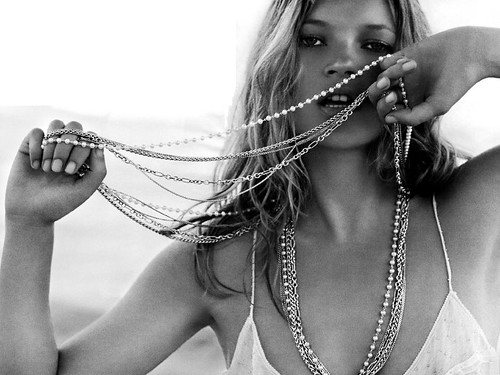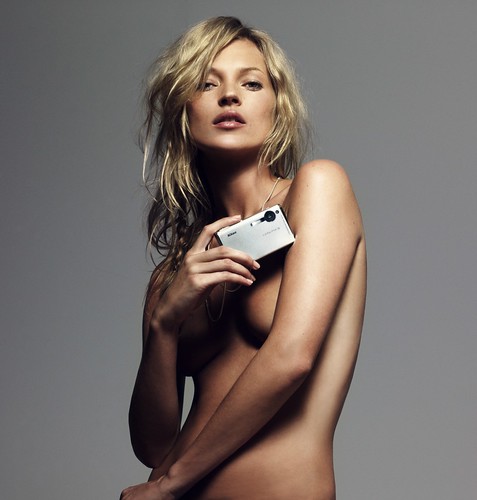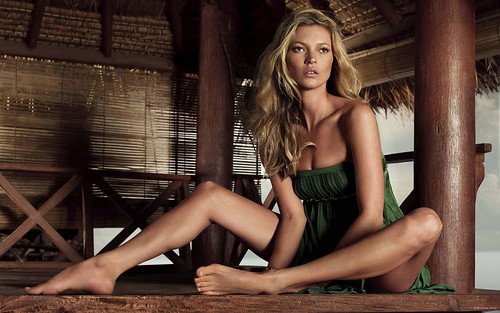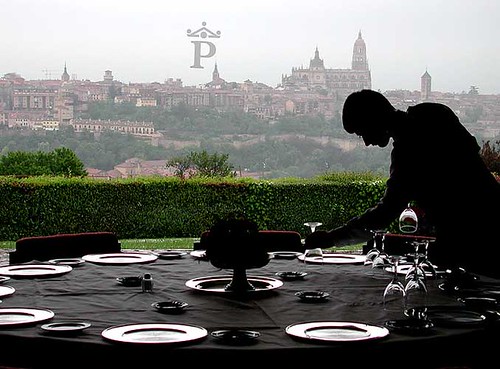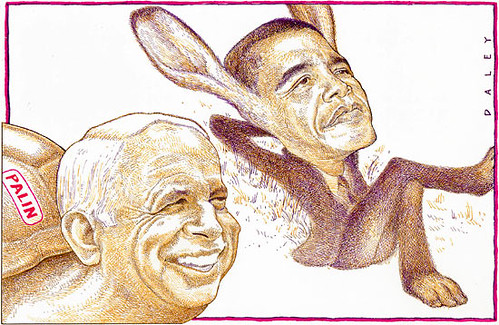sábado, setembro 20, 2008
terça-feira, setembro 16, 2008
sexta-feira, setembro 12, 2008
terça-feira, setembro 09, 2008
sábado, setembro 06, 2008
quinta-feira, setembro 04, 2008
quarta-feira, setembro 03, 2008
Un-amnesic Clive

Clive James in Times Literary Supplement
The exiles who wowed America
How exiled European artists reacted to the energy and freedom of the US
Imagine Balanchine watching a bunch of cheerleaders and you’ve got this book in a flash. Vignettes are its basic strength, as was bound to be true. The subject of the twentieth-century European artists in exile is too big for one book. Jean-Michel Palmier proved it by publishing his pioneering compendium Weimar en exil (1988) as two books, one of them called Exil en Europe and the other Exil en Amérique. Since there could easily have been others – Exil en Australie would have been interesting – it will be appreciated that Palmier himself felt obliged to limit his purview.
Joseph Horowitz gets the story into a single volume, Artists in Exile, by concentrating on a single destination, America, and even then he trims the field. His subtitle “How refugees from twentieth-century war and revolution transformed the American performing arts” leaves out the writers, painters, photographers and architects, which means we aren’t going to hear much about any of the Mann clan, and nothing at all about Mondrian, Ernst, Léger, Moholy-Nagy, Mies, Gropius, Andreas Feininger, Lyonel Feininger . . . but let’s stop. Horowitz gives us mainly those exiles who worked in music, theatre and film. Even then, there are more than enough names to be going on with: Balanchine, Stravinsky, Koussevitsky, Toscanini, Stokowski, Kurt Weill and Rouben Mamoulian are only the most prominent.
Horowitz provides biographical sketches for them all, each sketch studded with quotable illustrations. (Otto Preminger, hearing a group of his fellow émigrés speaking Hungarian, said, “Don’t you people know you’re in Hollywood? Speak German.”) The result is a rich assembly, an unmasked ball teeming with famous names, but you always have to remember – and our author, to his credit, never forgets – that in too many cases their attendance was compulsory, a fact which can lend a sad note to the glamour.
There was a trend towards America anyway. Market forces did their stuff, and even if there had been no wars and revolutions there would have been a transfer of creative power. Horowitz is right to feature Dvorák prominently at the beginning of his line-up of the musicians. In the late nineteenth century, Europe wasn’t trying all that hard to drive Dvorák out, but he could see how America was trying to pull him in. His symphony “From the New World” was written not just out of appreciation for America’s plantation melodies and rolling landscapes, but out of gratitude for America’s readiness to employ him. Mahler, too, went to America for the job opportunities. Caruso could have stayed in Europe, but he wanted to sing at the Met, correctly estimating that it was the centre of his world.
In the twentieth century, not even the Nazis could send Picasso transatlantic, but after his 1939 MoMA retrospective exhibition, New York became the centre of Picasso’s financial empire. If Horowitz had been following the money, Picasso would have got a mention. But our author can be excused for following only the physical freedom, which was the thing that the combined totalitarian assault from Soviet Russia and Nazi Germany made obviously crucial. There had always been a flight from Eastern Europe. The flight increased after the Russian Revolution in 1917. Even before the Nazis came to power in 1933, the flight had turned into an exodus. Between 1931 and 1945, 1,500 European musicians arrived in America. Most of them would have been superfluous to requirements if there had not been a demand to match the supply.
There was, on the whole; but what the United States most wanted was the performers, not the composers, who would always be up against it unless, like Korngold, they went to Hollywood because they already had Hollywood in their souls. Stravinsky is famous now only for what he composed before he got to America in 1939. Horowitz can make such judgements boldly, out of deep knowledge. The quondam New York Times music critic and Executive Director of the Boston Philharmonic knows the American classical music scene inside out, which is a good thing because turning it inside out is largely what the European influence did to it, although part of Horowitz’s central point is that the big changes were under way before the main influx arrived.
Horowitz has a paradox to deal with here, and out of it he makes his most useful general argument. According to him, the American home-grown composers were up against it, too. The pressure was always on them to produce a uniquely American equivalent of the European serious musical tradition. This being so, they tended to ignore the implications of the American popular-music tradition that had already burgeoned in the jazz joints, in Tin Pan Alley and on Broadway. George Gershwin and Leonard Bernstein, both of Russian parentage, would be exceptions in seeing a way ahead in the Broadway musical show. Aaron Copland, also of Russian parentage, was more typical in finding no time at all for jazz: he sought a more elevated way of sounding American. Most of the immigrant composers, however, were impressed by the native vernacular energy, just as Dvorák had been, although he was in America for only two years and wrote the Negro Spiritual themes in the New World Symphony before he had ever met a Negro.
For the new arrivals in the twentieth century, most of whom made landfall with nothing but their luggage to call their own, the upsurge of American popular music was so clamorous that they had to be theorists to miss it. Adorno ran true to form by dismissing jazz out of hand, but he was only an intellectual. Kurt Weill, Adorno’s bête noire (the feeling was mutual), immersed himself in the new vitality. It had already reached him at long range when he was still in Weimar Germany, composing the music for Bertolt Brecht’s words. Closer now to the source of the theatrical exuberance he felt himself cut out for, Weill embraced Broadway with an intensity that most of the American native big names – they included Sessions and Ives as well as Copland – never dreamed of.
Gershwin, the most gifted of all the home-grown American composers, was similarly open to the demotic allure of his birthplace, but he died young. Weill himself was dead at the age of fifty, but in his time alive in America he exemplified how a newcomer was more likely to be impressed by his new country than anyone who was born and raised there. Weill built up an achievement with his Broadway show music, but after the war the achievement was put in the shade by the arrival in New York of a Threepenny Opera production, starring Lotte Lenya, that enabled Weill’s critics to say he had expressed his real strength in the old country and had been dissipating it ever since he arrived on the Great White Way.
Horowitz rather agrees with them, saying that Brecht’s lyrics had given Weill’s music the “distance” it needed not to sound compromised by the desire to please. Horowitz doesn’t say what Lotte Lenya once said on television in her old age (“What was Brecht without Kurt?”). Most of us rate the Mahagonny music above, say, Lost in the Stars, but surely we should avoid the kind of determinism that would blame America for restricting Weill’s range. Weill himself thought his range had been increased, and only a snob would call him materialist for viewing the cash flow that rolled in from a hit show like One Touch of Venus as hard evidence that it had.
Béla Bartók wrote some of his best music in America. In 1945 he died broke, but only after a wave of artistic success that included the Sonata for Unaccompanied Violin, the Concerto for Orchestra, and the Third Piano Concerto. If he had accepted either of the posts offered to him by the Curtis Institute and Tanglewood he might even have had some money in the bank. Krenek, Eisler, Dessau and Zemlinsky all flopped in America but they would have cared less about that if they had really thought that the odds were stacked against art. The odds were stacked against a free ride. When Krenek, who had made his name in Europe as the composer of Johnny Spielt Auf, denounced the American requirement of “comprehensibility” as an automatic dilutant, he was really saying that that there was nobody to pay him for incomprehensibility. By the time he died, at ninety, the day had already arrived when American cultural foundations were ready to pay for anything, down to and including John Cage composing passages of modified silence, but for Krenek that final expansion of American hospitality had come too late. Even when the last door was still shut, however, all the other doors were open. Schoenberg, Hindemith and Bartók couldn’t make a living like Stravinsky, but at least they had the chance. Sometimes it must have seemed tantalizingly close. In Hollywood, Schoenberg played ping-pong with a neighbour. It was George Gershwin.
The case of Schoenberg raises the character issue: he actually had to concentrate quite hard to stay unpopular, cursing himself whenever he lapsed from the atonal back into something that a non-expert audience might have liked. Not even the basket cases could honestly say that they had fallen among Philistines. They had fallen into a larger competitive market than the one that they had been driven out of, and even if they failed in it they would have liked to succeed. Korngold’s success might have seemed silly and Weill’s meretricious, but the possibilities were there: more possibilities than most of them could handle. Weill welcomed the chance to work without subsidy in a country where he had to make his luck. He phrased these opinions in press releases that now sound like publicity material for a right-wing think tank, thereby handing his latter-day critics large sticks with which to beat him. But none of those critics could have written “September Song”.
All five of Martin+’s symphonies came from his time in the US, between 1941 and 1953. In sum, even when they failed, the non-American composers did a more thorough job than the home-grown Americans of being turned on by America. Some of them felt limited by the indifference of the audience to anything labelled as art, but there was always a minority audience for that. There was a minority audience even for Schoenberg. On a world scale, Schoenberg’s audience, for his atonal music that came after Verklärte Nacht, is still a minority today, but most of the minority is in America, where the minorities are larger. As for the American majority audience, they wanted music they could enjoy on the night. They wanted to go home whistling the tune. (Horowitz could have made a lot more of this point. There was a crisis going on in serious music, not just in world politics.) They wanted a show.
They so much wanted a show that they rated performers over composers. Performers stood out from the orchestra and could be admired for their virtuosity. The financial rewards for virtuosity were so huge that they needed satirical apology: Heifetz had a cash register standing on the bar of his apartment. The conductors stood out more than anybody and could inspire cults. Horowitz is particularly good on the conductors. Serkin, Koussevitsky and Toscanini come out of Artists in Exile as towering figures, as we might have expected. But Horowitz, always with his fine ear turned towards the quality of the music, generously lets Stokowski do a bit of towering, too. The Stokowski paragraphs add up to a box of chocolate-dusted truffles.
As opposed to some of the other European con men, Stokowski was fake to the roots. Erich von Stroheim at least knew how to pronounce the word “von” before he stole it. “Leopold Antoni Stanislaw Boleslawowicz Stokowski” undoubtedly had a Polish background somewhere in the rear distance, but his real name was Leopold Anthony Stokowski and he was born in England. His first wife, Olga Samaroff, was really Lucy Hickenlooper. She had met the right man. Stokowski made up the whole thing. Even his accent was made up.
Yet Stokowski, where it counted, was the real McCoy. Arriving in Philadelphia in 1918, he built up its orchestra into a sensationally effective musical instrument all on its own. Rachmaninov thought it was the finest orchestra he had ever heard. And whether or not Stokowski ever slept with Greta Garbo – his personal testimony on the subject might be comparable to the Hollywood restaurateur Mike “Prince” Romanoff’s personal testimony that he was a Russian nobleman who shot Rasputin – there can be no doubt that the conductor could read the dots. Admirers of Furtwängler must always deal with accusations that too much rubato alters the score. Stokowksi practically rewrote the score. (After every performance, all the parts had to be returned to his safekeeping, as if they were atomic secrets.) But the results were stunning.
Stokowski conducted the first performance in America of Mahler’s Eighth Symphony. Brought up on the Solti rendition, I had never got around to seeking out a recording of Stokowski’s live concert performance of the work. Now I will. Similarly, Joseph Horowitz recommends the recording of Stokowski with the Boston Symphony on the night of January 13, 1968. The way Horowitz raves learnedly about the great Eurofraud’s treatment of Tchaikovsky’s Hamlet Fantasy Overture (“such lightning velocity, hair-trigger intensity, and opulent upholstery . . . the plush but tensile string choir”) should send any reader diving into Amazon like Lara Croft into a tomb. I couldn’t find the recording listed, but now I know it exists. eBay next stop.
Artists in Exile, always interesting, starts looking essential when it lights up like that, evoking a specific subject of the author’s enthusiasm with sufficient vividness to make the reader want to get in for a share of the delight. I would still recommend the Los Angeles County Museum of Art’s 1997 catalogue album Exiles + Emigres (published in conjunction with Abrams and edited by Stephanie Barron) as the indispensable first book on the subject, but it is narrated by many voices, and there is always room for a single voice that knows how to register informed excitement. After all, any big picture we might have is bound to have started among those small responses, none of which seemed small at the time – each of them, in fact, was so all-consuming that it drove any question of a big picture clean out of our heads.
Individual works of art can make it hard to get a big picture even of the single mind that produced them. Forty years into its life and still the epitome of international American chic, the iced refinement of Balanchine’s Jewels for the New York City Ballet began with the raunch of his “Slaughter on Tenth Avenue” routine for the Broadway show On Your Toes in 1932. Balanchine didn’t create music directly but he had a means of interpreting it that made his influence profound. He could remake American ballet in his own manner because America didn’t have much ballet in the first place. Once again, a sophisticated American elite’s fondness for Europe was a big help. Balanchine’s impresario, Lincoln Kirstein, didn’t want a Martha Graham-style company. He wanted New York to have a European-style ballet corps. Balanchine, always mad for the girls, was glad to oblige. Crucially, however, Balanchine himself was no longer European. He loved Jack Benny, he had seen the western movies, he had driven across the country. And he had seen the cheerleaders. The embodiment of high aims yet uninhibited by hierarchy, he could lend style even to the vulgar: his tribute to its energy. It wasn’t Walt Disney who first put elephants in tutus so that they might dance to music by Stravinsky. The commission came from Ringling Brothers Circus.
Horowitz sensibly leaves the question open of whether Balanchine brought Europe to America or else helped America develop something it already had. Our author would have been wise to show similar openness when talking about the movies. He tries to, but can’t help suggesting that such eminent Europeans as Friedrich W. Murnau and Fritz Lang had a hard time adapting to the new populist idiom. He fudges the question of whether the new populist idiom might not have had a narrative power far in advance of expressionism, symbolism or any other -ism that the refugees had been forced to leave behind. One gets the sense that Horowitz, worthily brought up in the concert hall, missed the chance to waste his early years in the movie house, and has only recently been catching up with the filmed masterpieces.
But there were plenty of second-rate Hollywood movies that would have told him how the studio moguls often had first-rate tastes. (They were continually spatchcocking operatic arias into musical comedies otherwise uniformly dire.) Stuck with nothing except quality, Horowitz can appreciate the achievements of Wilder and Lubitsch. He appreciates Lubitsch so well that he crosses his own wires when he calls Lubitsch “a clever middlebrow craftsman mistaken for a highbrow genius”. After spending a whole book usefully arguing that the refugee highbrows seldom got the point about democratic art, it seems quixotic to belittle Lubitsch for not having been one of them.
Still, Horowitz can see that Ninotchka (1939) is an extraordinary example of America projecting a liberal vision of Europe back into its own ruins. He just might have made more of the possibility that it wasn’t only a case of the refugees changing the American arts, it was a case of the American arts changing the world, refugees included. Through the movies, a single refugee, Rouben Mamoulian – the star of the book’s useful chapters on theatre – opened the way for the most globally influential trend of the lot: the Broadway show expanded for the screen. One could only wish that Horowitz had seen such a run-of-the-mill songfest as Luxury Liner (1948) the year it came out, and had therefore seen Lauritz Melchior singing from Aida for Jane Powell. But he has seen and remembered every frame of a much earlier movie, Love Me Tonight (1932), in which Mamoulian created, almost in its entirety, the cinematic language for the Hollywood musical, at a time when, many critics will tell you, the sound-proofed camera was still confined to its booth. Mamoulian made it fly.
The result was a marvel. How Horowitz says so will set his younger readers clamouring to see it. Artists in Exile thus once again fulfils an aim that it didn’t know it had. Meanwhile the principal aim, to give the big picture, retreats further into the distance, as was inevitable. European and American culture have always been a two-way interchange and to talk about either of them exclusively is like trying to cut water with a knife. Joseph Horowitz says that Stokowski’s dream of a democratic high culture never arrived. But it couldn’t, because such a thing, as an aim, can exist only in theory. In practice, a successful artistic event deals with the anomaly by removing it. On radio, Stokowksi conducted Mahler’s Eighth for an audience bigger than the population of old Vienna. On screen he shook hands with Mickey Mouse. Yet there was talk of a movie about Wagner with Stokowski in the leading role. You can bet that he worked on the accent, waiting for the green light. Stokowski, like Gatsby, believed in the green light. So did they all, even when their ambitions came to nothing. At least they were free to try.
Joseph Horowitz
ARTISTS IN EXILE
How refugees from twentieth-century war and revolution transformed the American performing arts
480pp. HarperCollins.
978 0 06 07846 3
terça-feira, setembro 02, 2008
Para o meu Amor
We'll do it all
Everything
On our own
We don't need
Anything
Or anyone
If I lay here
If I just lay here
Would you lay with me and just forget the world?
I don't quite know
How to say
How I feel
Those three words
Are said too much
They're not enough
If I lay here
If I just lay here
Would you lay with me and just forget the world?
Forget what we're told
Before we get too old
Show me a garden that's bursting into life
Let's waste time
Chasing cars
Around our heads
I need your grace
To remind me
To find my own
If I lay here
If I just lay here
Would you lay with me and just forget the world?
Forget what we're told
Before we get too old
Show me a garden that's bursting into life
All that I am
All that I ever was
Is here in your perfect eyes, they're all I can see
I don't know where
Confused about how as well
Just know that these things will never change for us at all
If I lay here
If I just lay here
Would you lay with me and just forget the world?
Everything
On our own
We don't need
Anything
Or anyone
If I lay here
If I just lay here
Would you lay with me and just forget the world?
I don't quite know
How to say
How I feel
Those three words
Are said too much
They're not enough
If I lay here
If I just lay here
Would you lay with me and just forget the world?
Forget what we're told
Before we get too old
Show me a garden that's bursting into life
Let's waste time
Chasing cars
Around our heads
I need your grace
To remind me
To find my own
If I lay here
If I just lay here
Would you lay with me and just forget the world?
Forget what we're told
Before we get too old
Show me a garden that's bursting into life
All that I am
All that I ever was
Is here in your perfect eyes, they're all I can see
I don't know where
Confused about how as well
Just know that these things will never change for us at all
If I lay here
If I just lay here
Would you lay with me and just forget the world?

